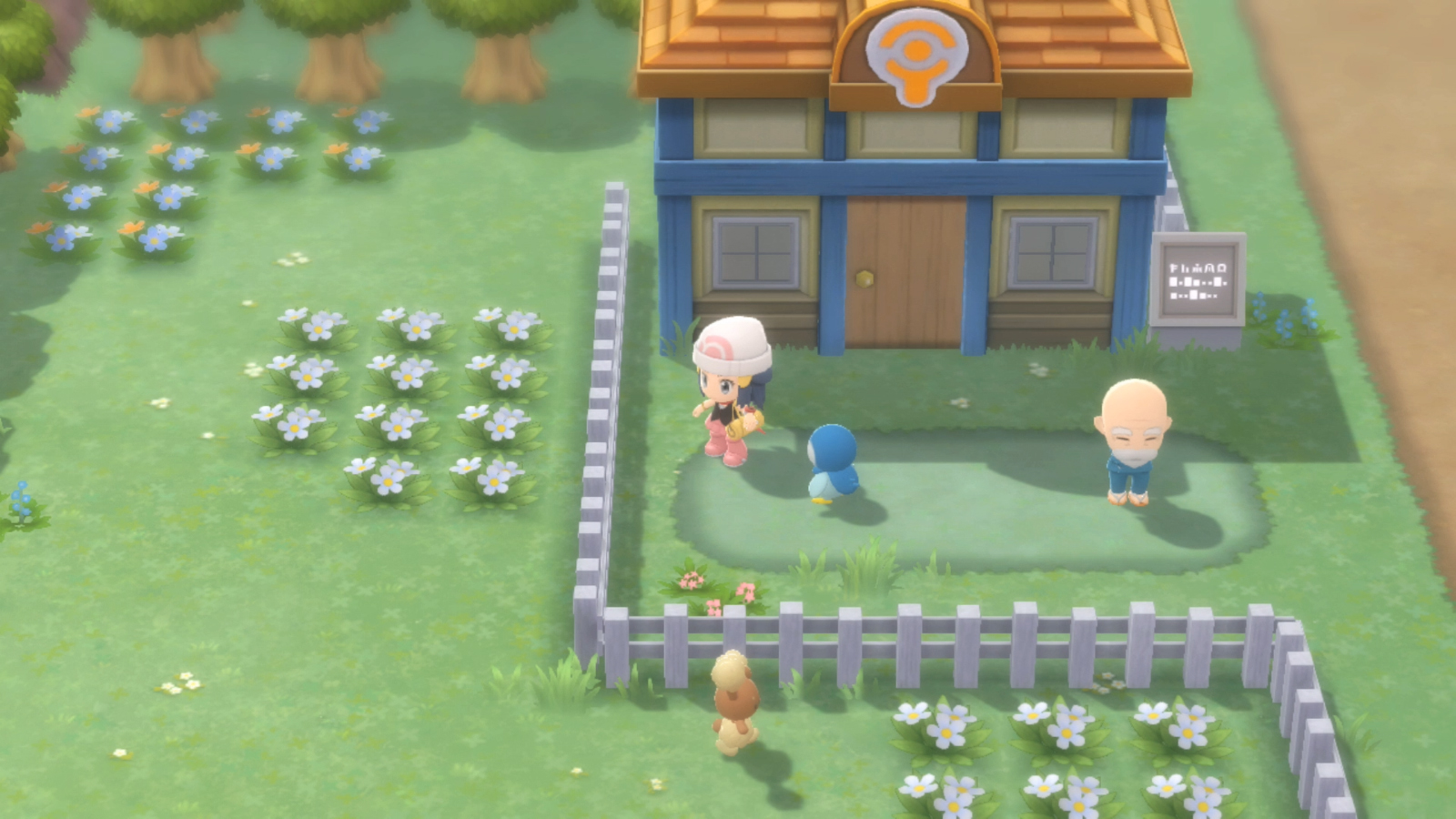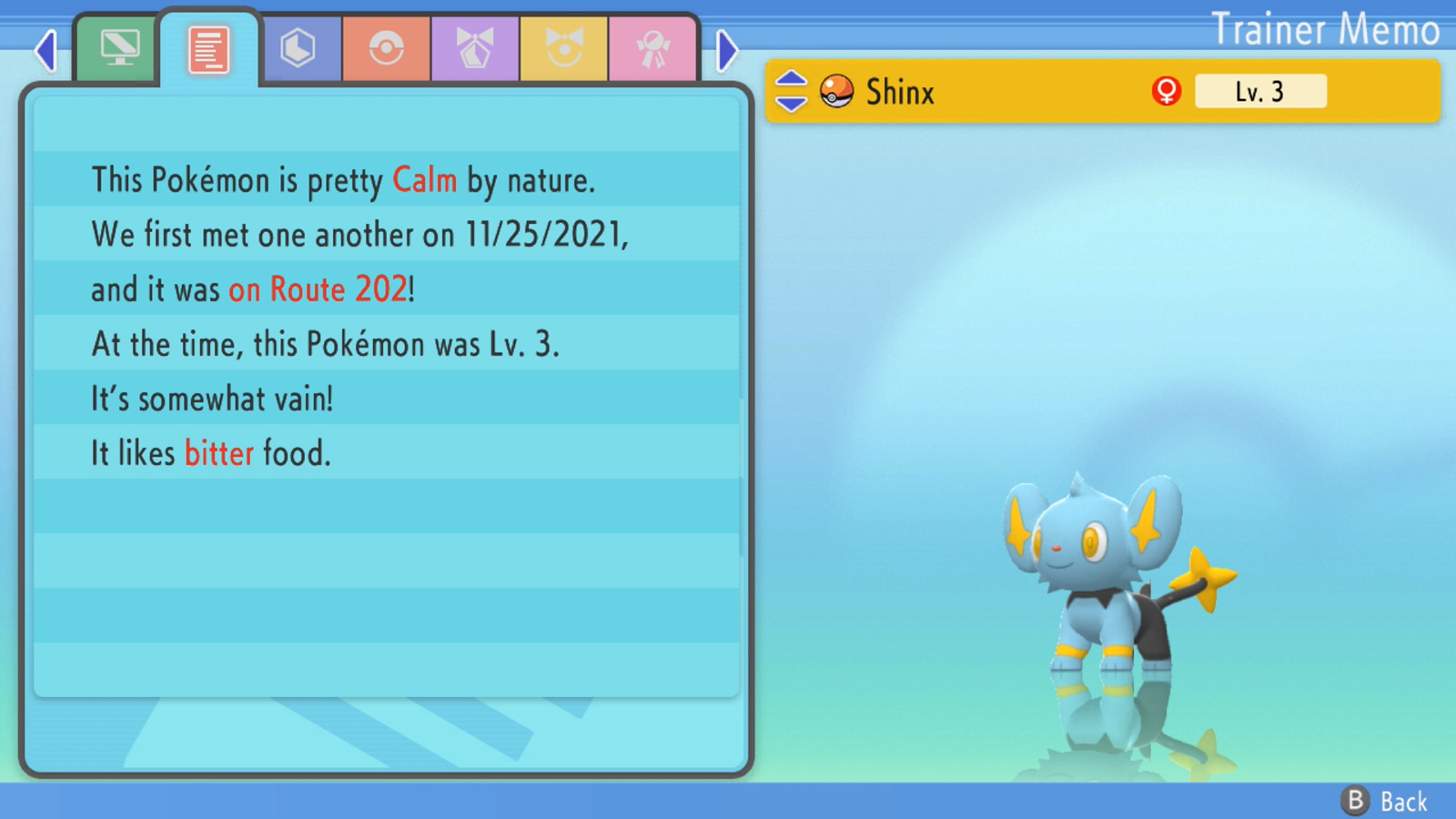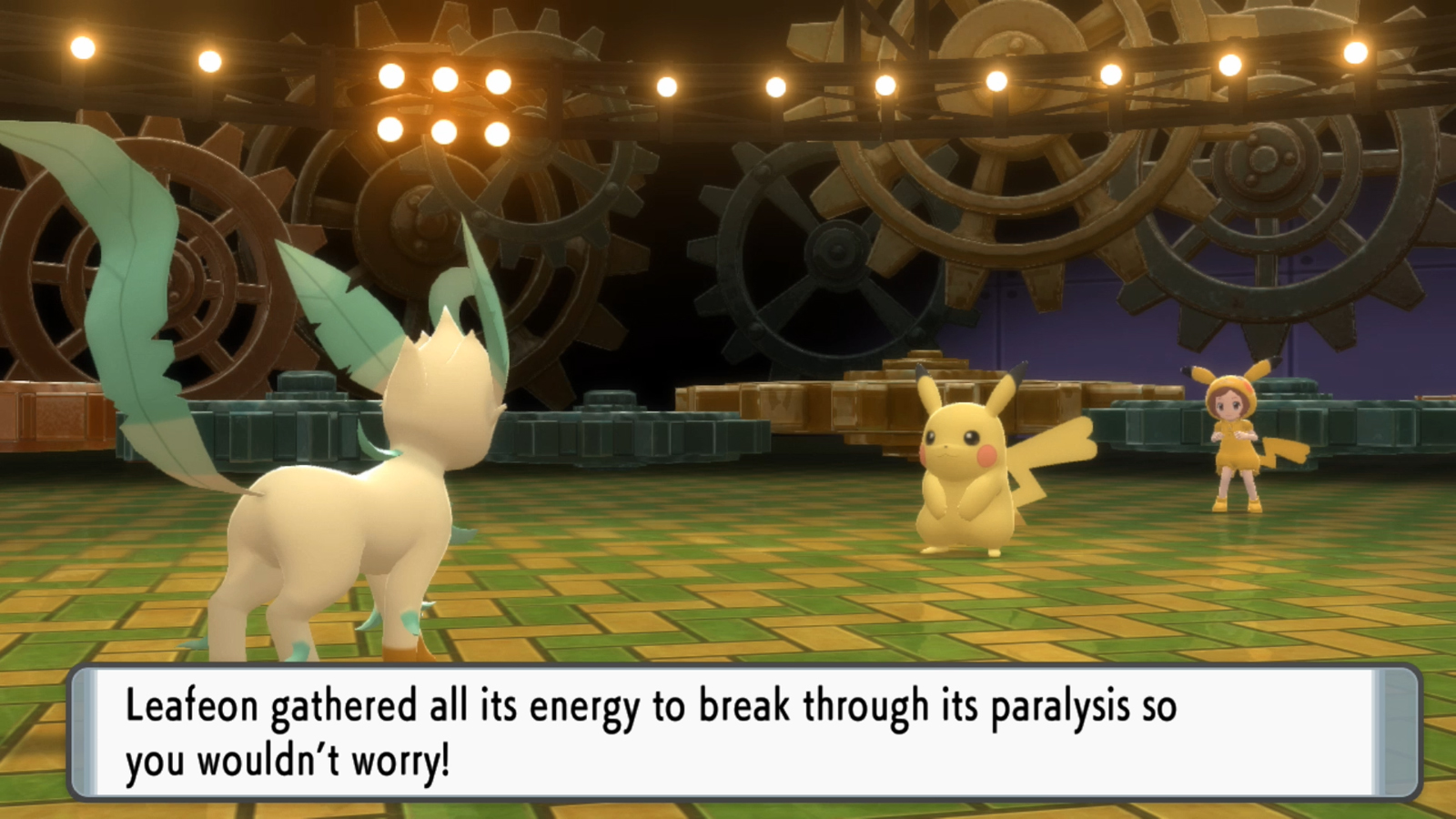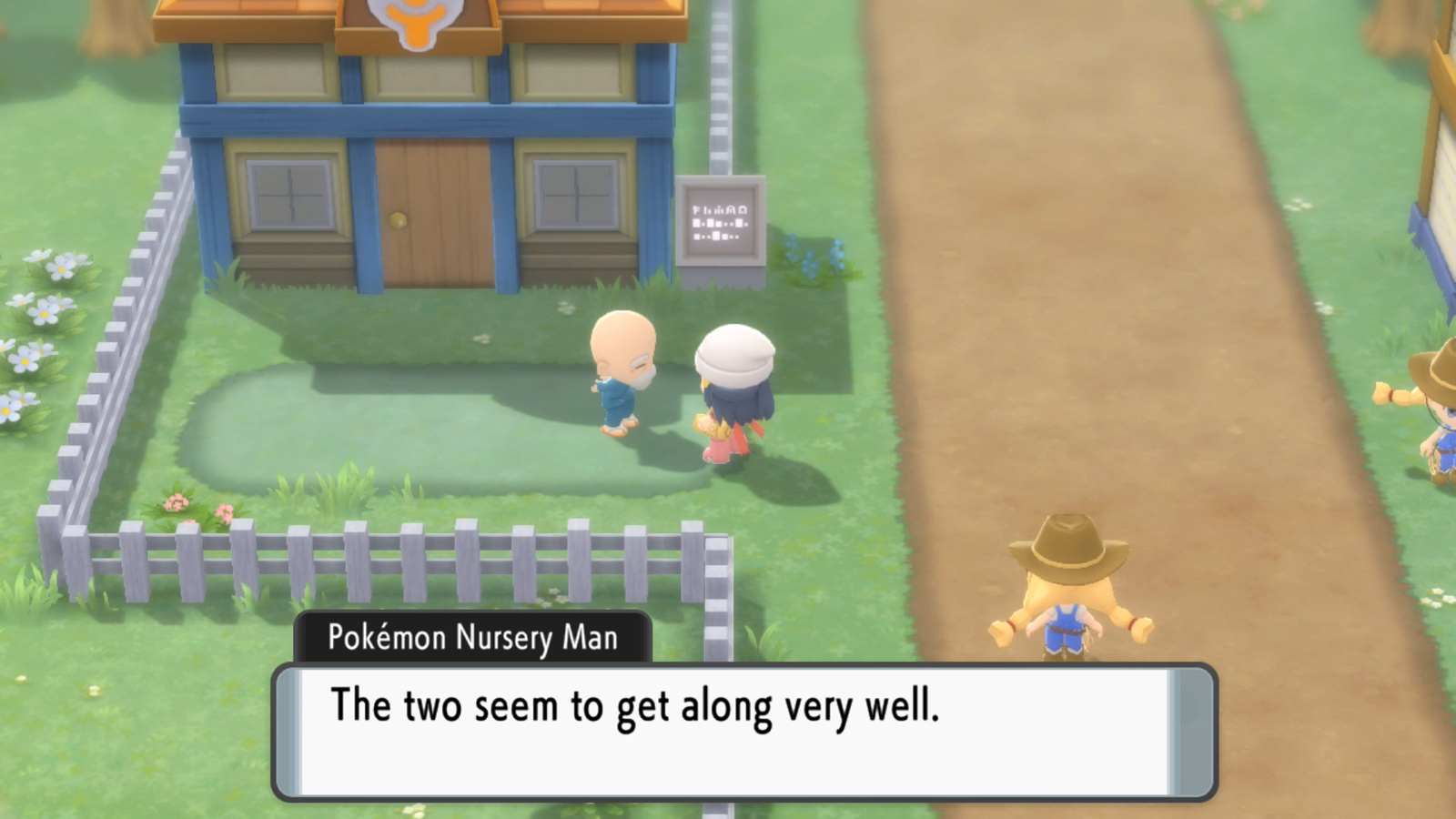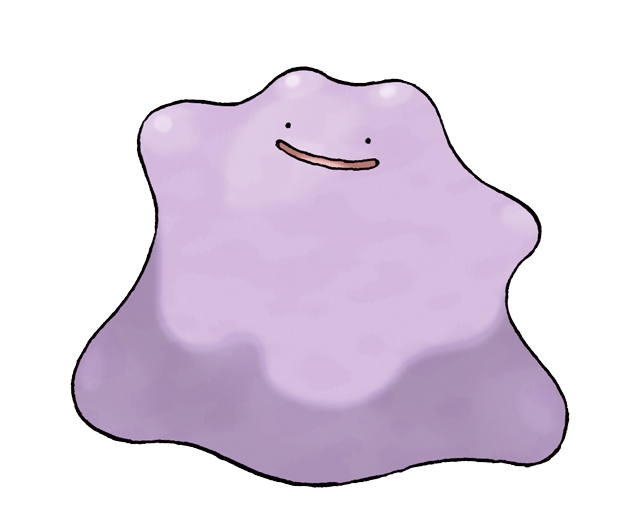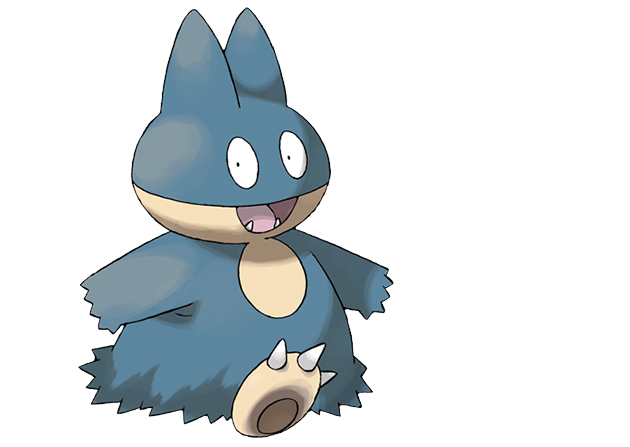Raising and Evolving Pokémon
Raising your Companions into Champions
There’s more to being an effective Trainer than just catching the right Pokémon and leading them skillfully in battle. To get the most out of your Pokémon, you’ll need to learn all the attributes that make them tick, wisely guiding their development as they learn new moves and evolve into new forms.
Levels and Exp. Points
After each opposing Pokémon is defeated in battle, your entire party will earn experience in the form of Exp. Points. When Pokémon level up at certain Exp. Point milestones, they’ll receive a boost to their stats, the possibility of learning a new move, and maybe even an opportunity to evolve. As is tradition in main series Pokémon games, Pokémon traded from other players or in-game Trainers gain boosted experience and level up more quickly than Pokémon that are native to your copy of the game.
Learning New Moves
A Pokémon can know only four moves at once, so learning any new moves beyond the fourth requires forgetting an existing move. Even though moves learned at higher levels are generally more effective than moves learned at lower levels, you’ll want to choose carefully to ensure you can access damaging moves of multiple types without sacrificing utility or flexibility. If a Pokémon forgets a move, it can make it relearn that move by visiting the Move Tutor in Pastoria City. The price isn’t cheap—one Heart Scale per move—but you can dig up Heart Scales in the Grand Underground if you need more.
The Distribution of Exp. Points
One major quality-of-life change from the original games to Pokémon Brilliant Diamond and Pokémon Shining Pearl is an overhaul in how experience is distributed among your party. Rather than requiring a held item, Exp. Point sharing now follows a system seen elsewhere in Pokémon: Let’s Go, Pikachu! and Pokémon: Let’s Go, Eevee!
Whenever an opposing Pokémon faints, every Pokémon in your current party that isn’t knocked out receives a share of the Exp. Points, whether they participated in the battle or not—though Pokémon that did actively participate get a larger portion of Exp. Points. Note that the amount of Exp. Points each Pokémon receives is based on the difference between its level and the level of the defeated Pokémon. The biggest beneficiaries of this new system are low-level Pokémon that hang out in the back—their adjusted share of Exp. Points from watching their stronger teammates defeat high-level Pokémon could boost them multiple levels in a single battle! This new system makes it easier to keep the Pokémon in your team at roughly the same level and lets you quickly train up a newly-caught Pokémon into fighting shape.

Pokémon Evolution
Typically, Pokémon grow a little bit tougher each time they level up. But sometimes, their development takes a drastic leap that transforms them into an entirely new species of Pokémon. These new forms are often more powerful, can learn different moves, and may even take on new types or Abilities. Evolving your Pokémon is a great way to boost your team’s power while filling in valuable data for your Pokédex. However, not all Pokémon evolve, and not all Pokémon that undergo Evolution evolve in the same way.
Pros and Cons of Evolution
While Evolution is usually a welcome development, it might not always be the best choice for your Pokémon. Evolved Pokémon often learn particular moves at later levels than unevolved Pokémon, or they might learn different moves altogether. Although evolved Pokémon’s moves are generally more powerful, some Trainers may want to wait to evolve their Pokémon until it learns a certain favorite move. To delay a Pokémon’s Evolution, you can press and hold the B Button when the Evolution animation begins. Unless that Pokémon is holding an Everstone, it will attempt to evolve again the next time it gains a level.

| Move | Buizel learns at | Floatzel learns at |
|---|---|---|
| Double Hit | Lv. 27 | Lv. 29 |
| Whirlpool | Lv. 31 | Lv. 35 |
| Razor Wind | Lv. 35 | Lv. 41 |
| Aqua Tail | Lv. 38 | Lv. 46 |
| Agility | Lv. 51 | |
| Hydro Pump | Lv. 45 | Lv. 57 |
Delaying Buizel’s Evolution for several levels would allow it to learn its best moves much earlier than if it had evolved into Floatzel.
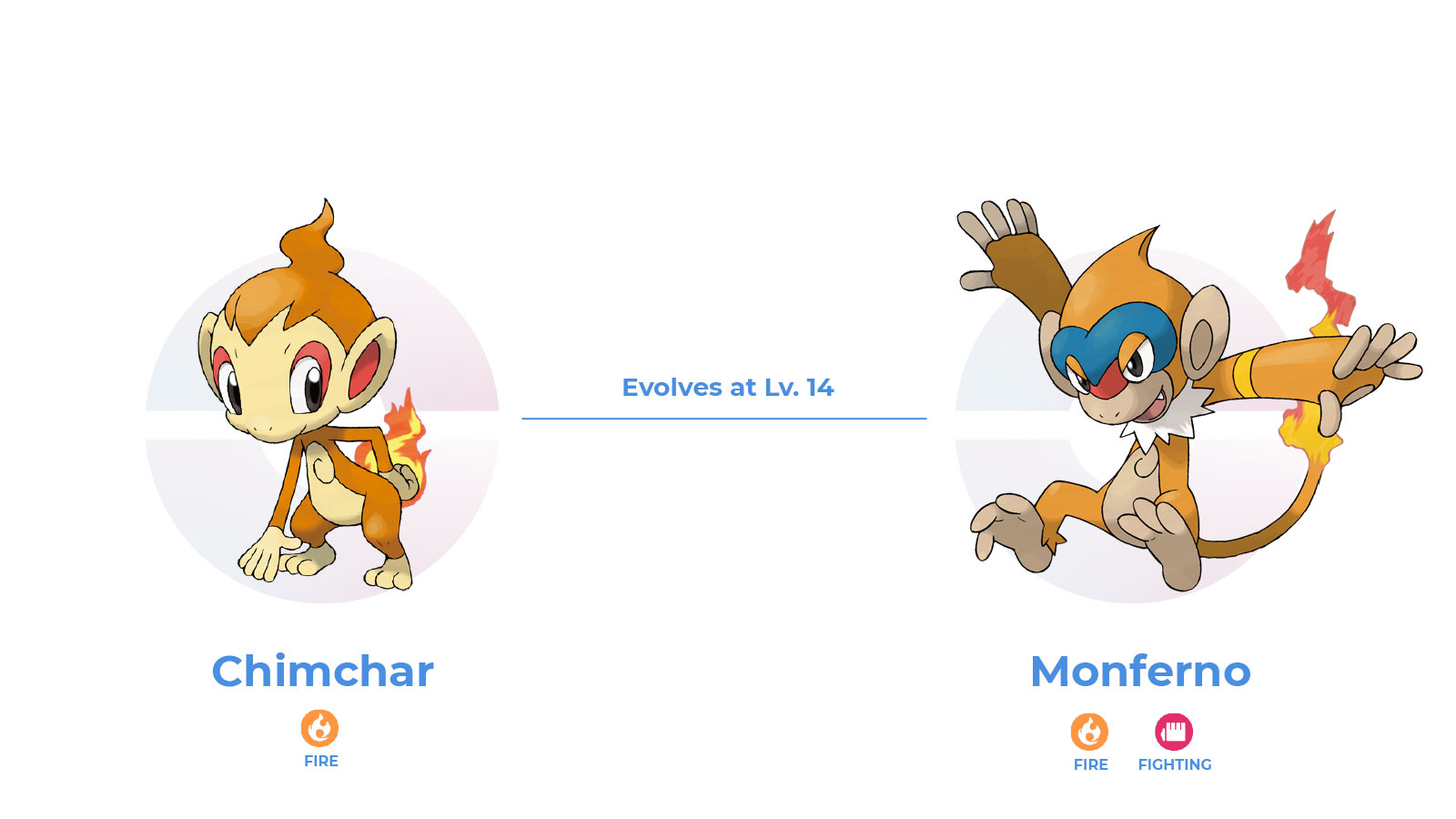
| Move | Chimchar learns at | Monferno learns at |
|---|---|---|
| Mach Punch | - | Lv. 14 |
| Nasty Plot | Lv. 23 | - |
| Feint | - | Lv. 29 |
| Facade | Lv. 31 | - |
| Close Combat | - | Lv. 36 |
| Flamethrower | Lv. 41 | - |
| Flare Blitz | - | Lv. 49 |
A Chimchar that levels up without evolving will learn different moves than its evolved form Monferno.
Alternate Methods of Evolution
While Evolution is usually a welcome development, it might not always be the best choice for your Pokémon. Evolved Pokémon often learn particular moves at later levels than unevolved Pokémon, or they might learn different moves altogether. Although evolved Pokémon’s moves are generally more powerful, some Trainers may want to wait to evolve their Pokémon until it learns a certain favorite move. To delay a Pokémon’s Evolution, you can press and hold the B Button when the Evolution animation begins. Unless that Pokémon is holding an Everstone, it will attempt to evolve again the next time it gains a level.
Stone Evolution — Making some Pokémon evolve is as simple as selecting an item like a Thunder Stone or Dusk Stone and using it on a compatible Pokémon. The easiest way to find Evolution stones is to go Fossil digging in the Grand Underground. Keep in mind, though, that the evolved forms of some of these Pokémon may not be able to learn some new moves through leveling up, so you might want to wait to use the stone until they have a solid lineup of moves. This method of Evolution is more common among the Pokémon you can encounter after receiving the National Pokédex.
| Sinnoh Pokémon | Evolves from | Item required |
|---|---|---|
| Raichu | Pikachu | Thunder Stone |
| Clefable | Clefairy | Moon Stone |
| Roserade | Roselia | Shiny Stone |
| Mismagius | Misdreavus | Dusk Stone |
| Honchkrow | Murkrow | Dusk Stone |
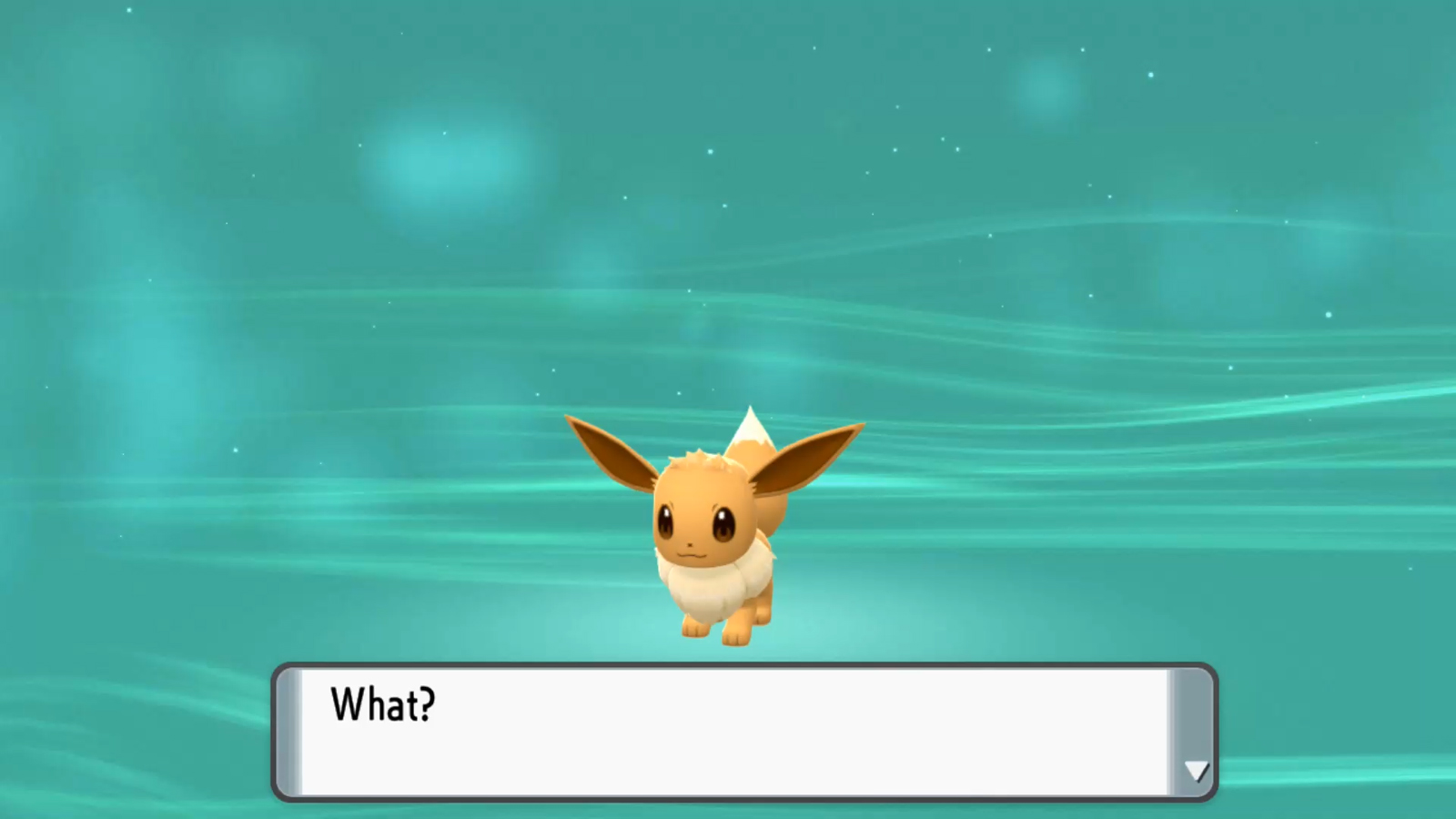
Trade Evolution — Certain Pokémon evolve only when they are given or received in a trade. Trading is the only way to acquire the evolved forms of the five Sinnoh Pokémon below. Note that you must trade or receive an Onix that’s holding the Metal Coat item for it to evolve into Steelix. Several National Pokédex Pokémon must also be holding a particular item in order to evolve when traded.
| Sinnoh Pokémon | Evolves from | Held item required |
|---|---|---|
| Alakazam | Kadabra | - |
| Machamp | Machoke | - |
| Golem | Graveler | - |
| Gengar | Haunter | - |
| Steelix | Onix | Metal Coat |
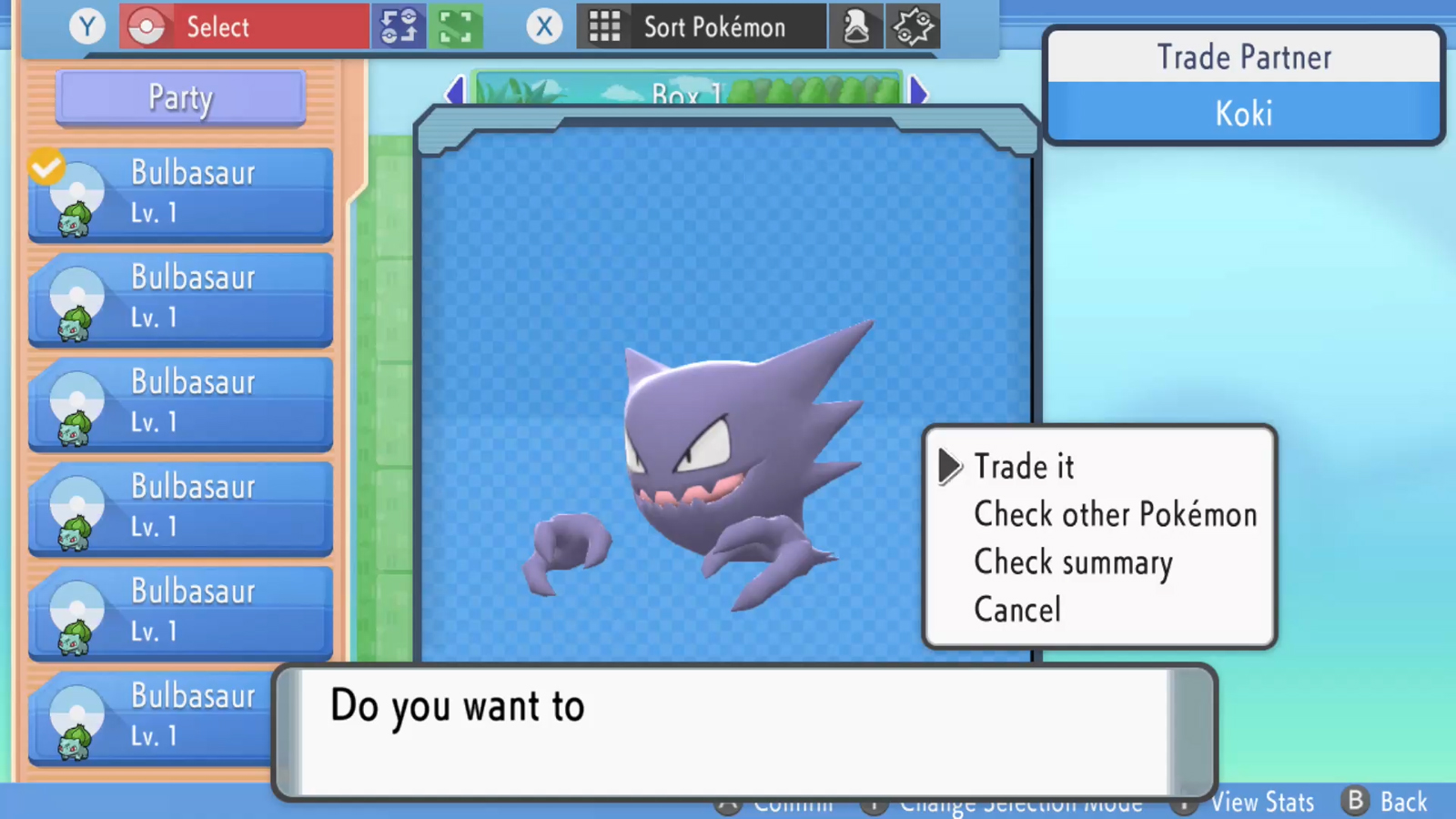
Friendship Evolution — Your Pokémon will grow more attached to you as you level them up in battle, walk with them outside of their Poké Balls, and more. But those bonds of friendship can start to fray if don’t keep your Pokémon happy and healthy. Once your friendship with the below Pokémon reaches a certain stage, they’ll evolve the next time they level up—although some Pokémon will only do so at certain times of day, like how Sneasel can only evolve into Weavile if it’s holding a Razor Claw when it levels up at night.
| Sinnoh Pokémon | Evolves from | Time of day |
|---|---|---|
| Pikachu | Pichu | Any |
| Clefairy | Cleffa | Any |
| Snorlax | Munchlax | Any |
| Crobat | Golbat | Any |
| Marill | Azurill | Any |
| Blissey | Chansey | Any |
| Roselia | Budew | Morning/Day |
| Chimecho | Chingling | Any |
| Lopunny | Buneary | Any |
| Lucario | Riolu | Morning/Day |
Other Evolution Factors — There are still other ways for Pokémon to evolve, although some methods might be unique to a single Pokémon! Feebas, for example, only evolves into Milotic when its Beauty condition is high enough. Gender plays a part in the Evolution of some Pokémon; only the rare female Combee will become Vespiquen at level 21. Some Pokémon need to know certain moves to evolve, so when an Aipom wants to learn Double Attack or a Bonsly or Mime Jr. want to learn Mimic, make sure you let them!
Other Pokémon Attributes
An individual Pokémon is more than just its level, stats, and species. Other attributes, including Abilities, Nature, and friendship levels, can make your Lv. 40 Bidoof more or less effective in battle than your friend’s Lv. 40 Bidoof. Don’t overlook these key details that combine to make your Pokémon one of a kind.
Pokémon Abilities
Each individual Pokémon has one Ability, listed on the Pokémon Skills tab of its summary. Whether they provide powerful boosts or are mostly a drawback, Abilities can alter the shape of a Pokémon battle. The Scrappy Ability, for example, lets a Pokémon hit Ghost-type Pokémon with Normal-type or Fighting-type moves, which Ghost types are normally immune to. Pokémon with the Klutz Ability, on the other hand, are prevented from using held items in battle. Many species of Pokémon will randomly possess one Ability from a small set of options, while other species have just one possible Ability. In many cases, Abilities define the special quirks of a Pokémon species. For example, Carnivine hovers just above the playing field with its Levitate Ability, rendering it immune to Ground-type attacks.
Pokémon Natures
Each Pokémon also has a randomly determined Nature, which you can view on the Trainer Memo tab of its summary. A Pokémon’s Nature generally grants a boost to the growth of one stat while reducing another stat’s growth, although some Natures have no effect on stats at all. An individual Pokémon’s Nature can ultimately have a powerful effect on its potential in battle.
Take a Pokémon with a move list full of special attacks, for instance. That Pokémon would benefit greatly from the Modest Nature, which boosts the growth of its Sp. Atk stat at the expense of its unused Attack stat. But if that Pokémon’s Nature was Adamant, which boosts Attack at the expense of Sp. Atk, it wouldn’t be as effective at dealing damage with special moves as other members of its species. Look for the blue and red arrows on the Pokémon Skills tab of a Pokémon’s summary page to see which stats are being boosted and reduced by its Nature.
A Pokémon’s stats also affect which flavors of Poffin it prefers. See our article on Super Contest Shows [link] for more details.
| Nature | Boosted Stat | Reduced Stat | Favored Flavor |
|---|---|---|---|
| Adamant | Attack | Sp. Atk | Spicy |
| Bashful | - | - | - |
| Bold | Defense | Attack | Sour |
| Brave | Attack | Speed | Spicy |
| Calm | Sp. Def | Attack | Bitter |
| Careful | Sp. Def | Sp. Atk | Bitter |
| Docile | - | - | - |
| Gentle | Sp. Def | Defense | Bitter |
| Hardy | - | - | - |
| Hasty | Speed | Defense | Sweet |
| Impish | Defense | Sp. Atk | Sour |
| Jolly | Speed | Sp. Atk | Sweet |
| Lax | Defense | Sp. Def | Sour |
| Lonely | Attack | Defense | Spicy |
| Mild | Sp. Atk | Defense | Dry |
| Modest | Sp. Atk | Attack | Dry |
| Naive | Speed | Sp. Def | Sweet |
| Naughty | Attack | Sp. Def | Spicy |
| Quiet | Sp. Atk | Speed | Dry |
| Quirky | - | - | - |
| Rash | Sp. Atk | Sp. Def | Dry |
| Relaxed | Defense | Speed | Sour |
| Sassy | Sp. Def | Speed | Bitter |
| Serious | - | - | - |
| Timid | Speed | Attack | Sweet |
Pokémon Friendship
In the original Pokémon Diamond and Pokémon Pearl, your Pokémon’s level of friendship with you was tracked as an Evolution factor for a few Pokémon species, but friendship had little further effect. Now, however, Pokémon Brilliant Diamond and Pokémon Shining Pearl have adopted the friendship system of more recent releases like Pokémon Sword and Pokémon Shield, in which your relationship with your Pokémon has tangible effects in combat as well.
You can increase your friendship with your Pokémon by keeping them in your party, leveling them up, giving them massages in Veilstone City or at the Ribbon Syndicate, and trying out other methods that are new to Pokémon Brilliant Diamond and Pokémon Shining Pearl—like winning Super Contest Shows with them or letting them walk with you outside of their Poké Balls. Friendship levels decrease when you let your Pokémon faint in battle, leave them poisoned, or feed them certain foul-tasting items.
You can monitor your friendship with the Pokémon in your party by selecting and holding a Pokémon’s icon in the Pokétch’s Friendship Checker app. As your Pokémon’s affection for you rises, you’ll see telltale signs like the little bounce it does at the start of combat. At that point, certain segments of battle dialogue will change as your Pokémon’s actions are attributed to your growing friendship. As a Pokémon’s friendship rises even higher, it will have a small chance of activating useful perks in battle, such as withstanding a knockout blow with 1 HP remaining, clearing status conditions from itself without any items, or even avoiding attacks completely. Pokémon with which you have a close friendship also earn additional Exp. Points in battle.
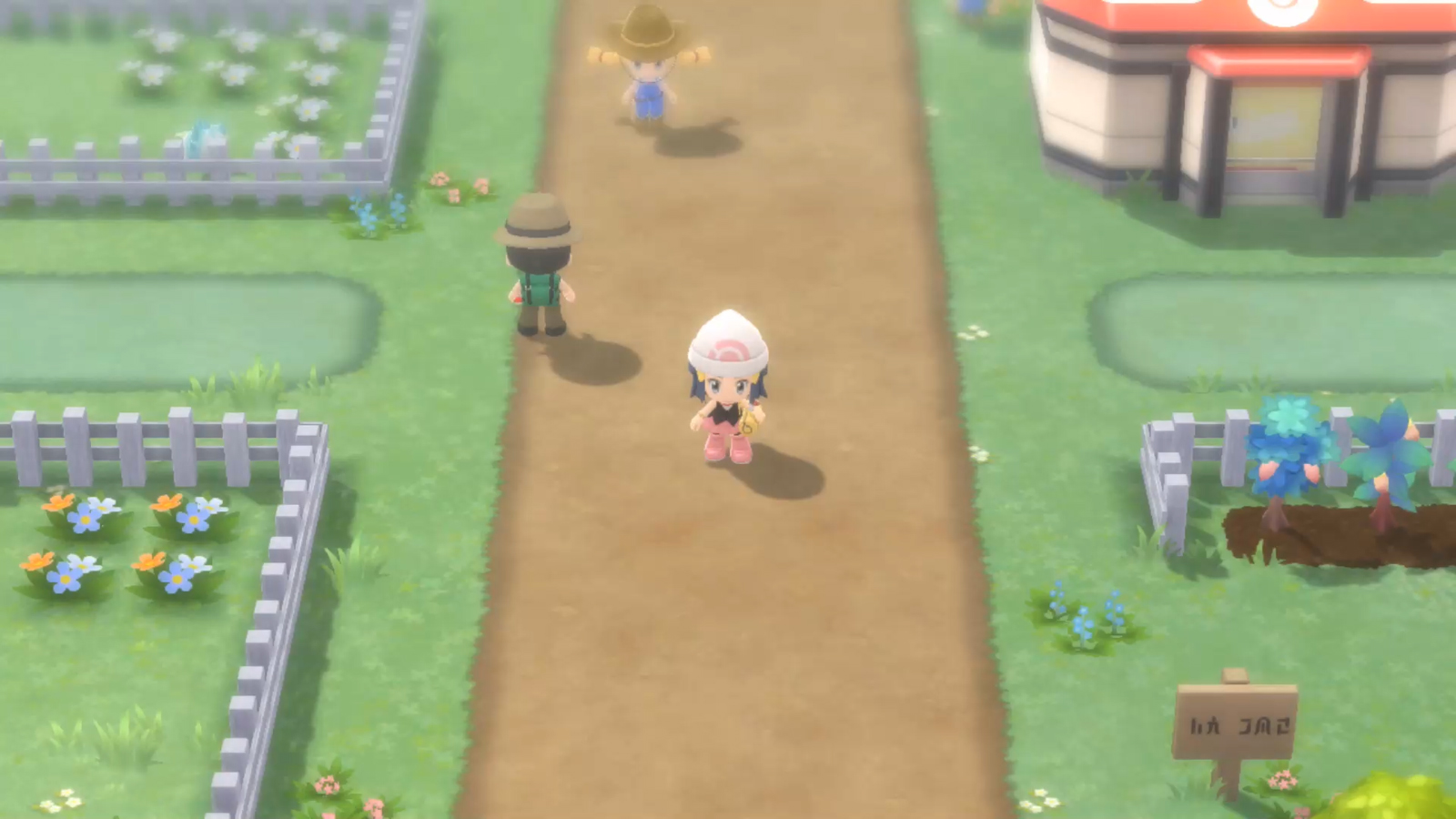
Cracking Pokémon Eggs
When you leave two compatible Pokémon at the Pokémon Nursery in Solaceon Town, you may return to find a Pokémon Egg waiting for you. After you add it to your party and travel with it for a while, this Egg will eventually hatch into a low-level Pokémon that shares the species of one of its parents. Not only does discovering Eggs allow you to hatch rare Pokémon, which are excellent candidates for trading, but you can also try to hatch Pokémon with ideal combinations of moves and Abilities. There are even some Pokémon that can only be acquired outside of trading by hatching them from Eggs!
The Process of Egg Discovery
Step 1 – Drop off two compatible Pokémon at the Pokémon Nursery in Solaceon Town. Any two Pokémon should be compatible as long as one is male and the other is female, and both belong to the same species and share some traits in common. Note that Pokémon of unknown gender are only compatible with Ditto (see You Can’t Go Wrong with Ditto for more information).
Step 2 – Talk to the Pokémon Nursery Man in front of the Pokémon Nursery. His comments will indicate whether the two Pokémon left in his care are compatible. If he says that they “prefer to play with other Pokémon more than with each other,” then the two Pokémon are incompatible and no Egg will be discovered. If he says the two “don’t seem to like each other much,” that means the odds of discovering an Egg are low. If he says that they “seem to get along” or “seem to get along very well,” then there’s a good chance of discovering an Egg.
Step 3 – Resume your adventure! After walking or riding your bike for at least a few hundred steps—progress is based on steps walked, not time elapsed—return to the Pokémon Nursery and talk to the Pokémon Nursery Man to see if a Pokémon Egg has been discovered. You can also use the Pokétch’s Egg Monitor app to check on your Pokémon without having to return to the Pokémon Nursery.
Step 4 – Pokémon Eggs typically contain a Lv. 1 Pokémon of the same species as the female Pokémon left at the Pokémon Nursery. Add an Egg to your party and walk a few thousand steps (give or take) to hatch it. You can speed up the hatching process by keeping a Pokémon with either the Magma Armor or the Flame Body Ability on your team.
Inheritable Attributes
Trainers familiar with Pokémon Eggs in Pokémon Sword and Pokémon Shield will recognize the same conditions for hatching Eggs in Pokémon Brilliant Diamond and Pokémon Shining Pearl. The Pokémon found inside an Egg will always be the same species as the female Pokémon (or the non-Ditto Pokémon) and will often inherit its Ability. The moves that a Pokémon knows upon hatching from an Egg might even include moves known by its parents.





